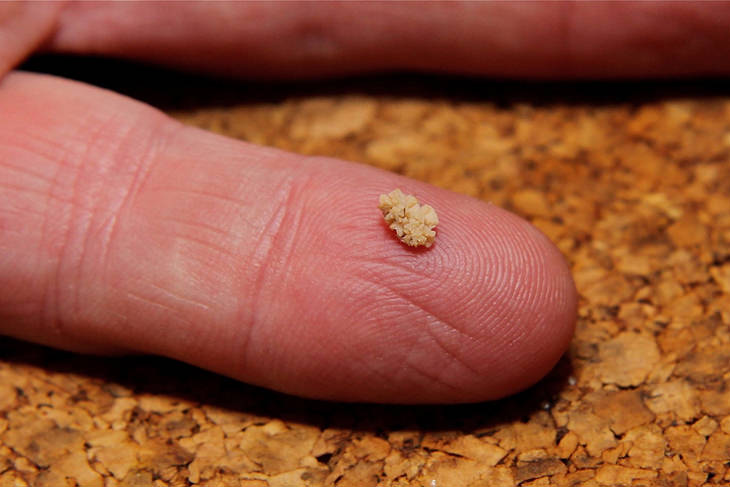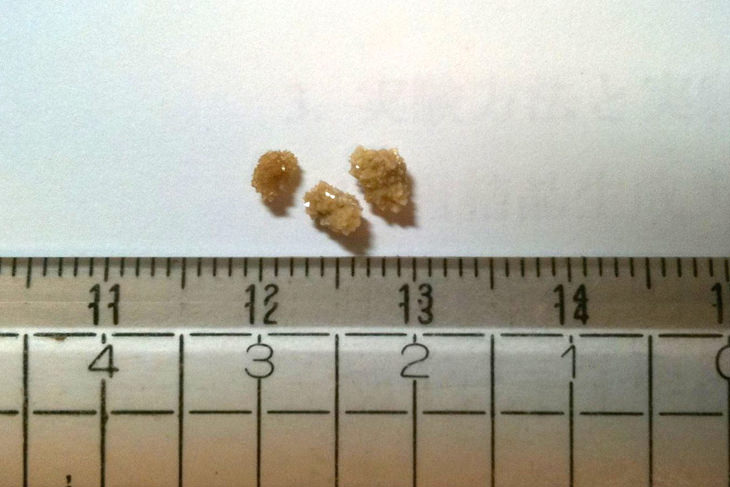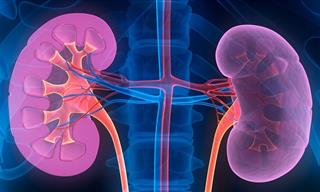It looks like a fascinating medical breakthrough has been made – revolutionary research has found that a natural fruit extract is capable of dissolving the calcium oxalate crystals that form kidney stones. These findings provide a solid basis for what could lead to the biggest leap forward in kidney stone treatment of the past 30 years.
The findings were published in the August 8th, 2016 online edition of Nature by the study’s lead author, Jeffrey Rimer, who is an associate professor of chemical engineering at the University of Houston. The study marked the first time that a compound called hydroxycitrate has shown to be effective at inhibiting calcium oxalate growth.
When hydroxycitrate is placed under certain conditions, it has the ability to actually dissolve the calcium oxalate that forms kidney stones. The results, as published in the aforementioned journal, were actually the findings from a combination of experimental computational and human studies.

Kidney stones are actually more common than you imagine – they affect up to 12% of all men, and 7% of women. The risk of developing them is increased in individuals that have high blood pressure, diabetes or are obese.
Despite incidences of kidney stones rising around the world, the treatment for them hasn’t changed much for the better part of 30 years. The conventional way of treating them, as prescribed by most doctors, is to drink lots of water and avoid consuming oxalate-rich foods, such as rhubarb, okra, spinach and almonds.
Occasionally, doctors will also prescribe a potassium citrate supplement to slow any further crystal growth. Unfortunately, potassium citrate is not for everyone, because certain individuals are unable to tolerate the side effects.

John Asplin, a nephrologist at Litholink Corporation, was the first man to suggest hydroxycitrate as a potential kidney stone preventative medicine and treatment.
Head-to-head studies of potassium citrate and hydroxycitrate showed that while both compounds are capable of inhibiting calcium oxalate crystal growth, hydroxycitrate proved to be the more potent of the two, and exhibited key advantages that make it advantageous for use in the development of new kidney stone therapies.
Hydroxycitrate was also used in human studies as part of the body of research that findings were published for. Participants were administered the supplement for three days in order for researchers to determine whether the compound was excreted via their urine, which is a prerequisite for a supplement to work as a treatment.

Participants were shown to be able to pass the compound successfully, however the initial findings of the body of research as a whole only represent the groundwork being laid for an effective drug to be created in future.
Despite the research only being at the very early stages, there is much hope that a preventative medicine can be developed in the not too distant future. At present, questions remain regarding the long-term safety of the compound, as well as the correct dosage to administer.
The ability to halt calcium oxalate growth, and in some instances even dissolve it entirely, ultimately show that the hydroxycitrate has the potential to have an enormous impact on the global incidence rate of people who suffer from chronic kidney stone disease.
Content Source: Science Daily
Image Sources: 1, 2, 3
 Go to BabaMail
Go to BabaMail




















































